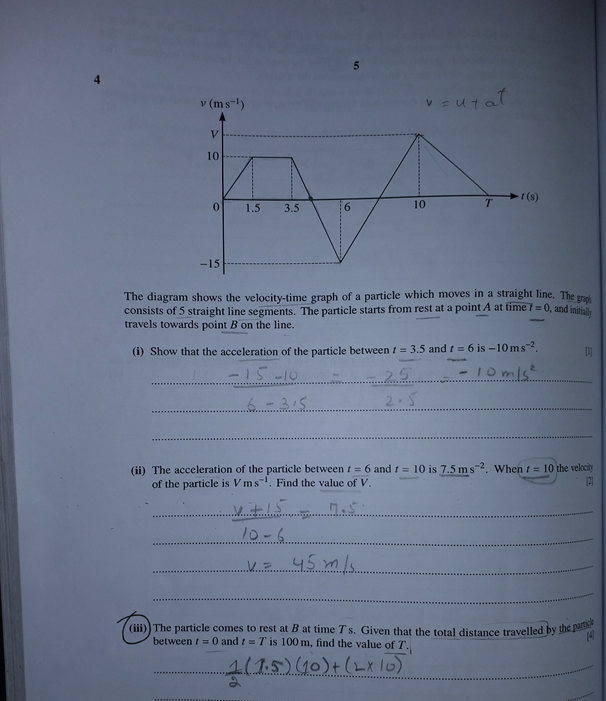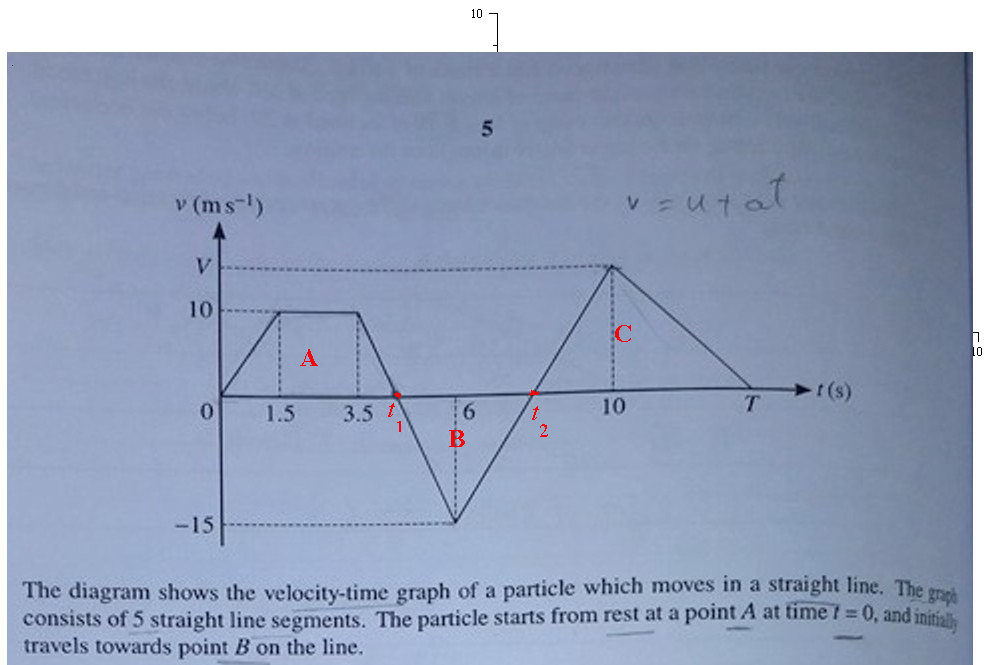It is question about finding distance from velocity time graph?

3 Answers
See below.
Explanation:
If you have a graph of velocity against time, the area under the graph represents the distance.
This makes sense if you consider this:
On the graph:
Distance along t axis x distance along v axis.
You can find the area if it linear by using areas of squares, rectangles, trapeziums etc.
This is what I get
Explanation:
Let us start with Part
(ii) We need to use kinematic expression
v=u+atv=u+at
Inserting given values
V=-15+7.5xx(10-6)V=−15+7.5×(10−6)
=>V=-15+30=15\ ms^-1
(iii)
- Area of trapezoid
=1/2("sum of parallel bases")xx"height"
Length of top base=3.5-1.5=2\ s
To calculate length of lower base we need to find timet_1 when velocity becomes=0 . Counting time fromt=3.5\ s
From the information given in (i)0=10+(-10)xxt_1
=>t_1=1\ s
:. Length of lower base=3.5+1=4.5\ s
Now Area of trapezoid=1/2(2+4.5)xx10=32.5\ m - Area of first triangle
=1/2"base"xx"height"
To calculate length of base we need to find timet_2 when velocity becomes=0 . Counting time fromt=6\ s
From the information given in (ii)0=-15+7.5xxt_2
=>t_2=2\ s
:. Length of base= Time gap between two instances when velocity becomes zero=8-4.5=3.5\ s
Area of first triangle=1/2xx3.5xx|-15|=26.25\ m
We have taken the magnitude of velocity as we need to find distance which is a scalar quantity.
(if we take negative sign in consideration we will get displacement which is a vector quantity) - From the given and calculated values
Total distance=100= Area of trapezoid+ Area of first triangle+ Area of second triangle
=>100=32.5+26.25+ Area of second triangle
=> Area of second triangle=41.25\ m
41.25=1/2"base"xx"height"
=>41.25=1/2"base"xx15
=>"base"=41.25xx2/15=5.5\ s
:.T=8+5.5=13.5\ s
Explanation:

For question (ii), you have made an error.
Using
Initial velocity
Acceleration
Question (iii).
We need to find areas A , B, C
In order to do this we first need to find
For
From question (i) we are told acceleration between 3.5 and 6 is
Using
Velocity is zero at
Velocity is
For
We know from (ii), that the acceleration between
Velocity at
Velocity at
Using
Area of trapezium (trapezoid) A
Area of triangle B
Area of triangle C
The sum of these areas is
Solving for T:

